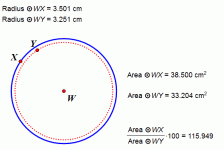Bob -
Given that the speed of sound in maple is 4100 m/s, I'm wondering if break cue manufacturers are barking up the wrong tree going to harder and harder tips.
Presumably the motivation for going to hard tips--phenolic or whatever--is a belief that they are more efficient in the way you describe above.
Do you--or anybody--know whether this is true?
An unintended comsequence, though, of these hard tips may be that because the contact time is shorter, there may not be enough time for the ball to "see" the full mass of the stick.
4100 meters/sec is 4 meters per milsecond. A round trip for the compression wave is about 3 meters (two stick lengths). So it takes about three quarters of a milisecond for the cueball to even have a chance of knowing about the back of the stick.
My guess is the contact time for break tips is in that range.
Why not try an efficient soft tip? Maybe get the contact time up to 1.2 ms or more ?
What do you tink?
The sos in CarbonFibre is about 16800 M/S . I have Aluminium ferrules and joint but a steel pin, ali is about 5270 M/S and steel is about 5032 M/S.
My question is , does the sound accelerate after passing through the tip and the ferrule as it gets to the carbon shaft?
It may explain the solid hit from the carbon shaft.These shafts do not have wood cores.
We have noticed with a phenolic tip a very high pitch sound from the cue ball strike, which is not there with a med layered tip.
Any thoughts Mike or Dave?
